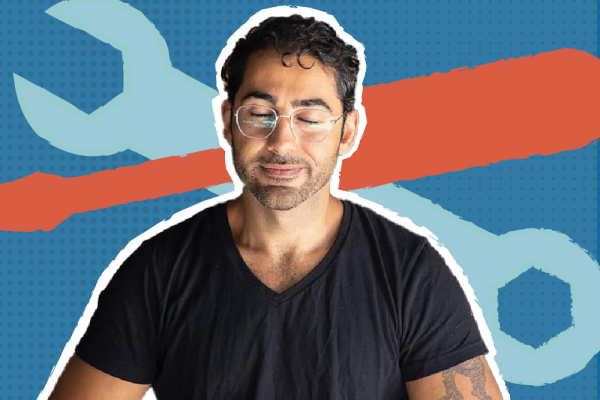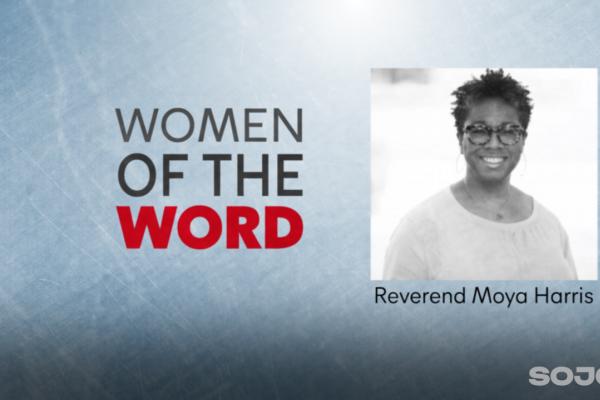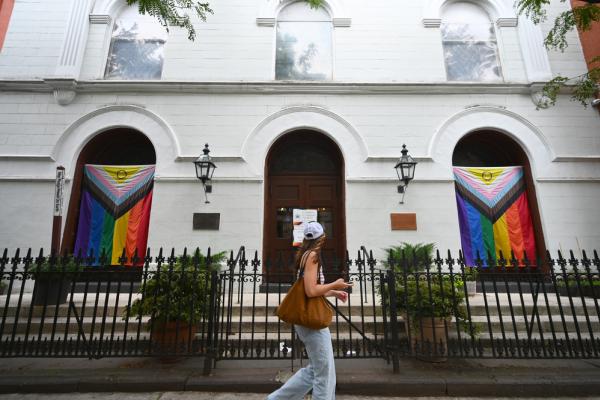When Democratic Socialist Zohran Mamdani defeated Andrew Cuomo in New York City’s mayoral primary, the political establishment didn’t quite know what to do.
Headlines described Mamdani’s win as “stunning,” “electrifying,” an “upset,” and even a “miracle.” Right-wing critics responded with predictable vitriol, labeling Mamdani a “communist,” “terrorist,” and a “little Muhammad.” These attacks were aimed both at his politics and his identity as an Indian American, a Muslim, and a socialist.
But what was most remarkable about Mamdani’s successful campaign wasn’t necessarily Mamdani himself. Rather, it was the working-class support behind his campaign that captured people’s attention. His calls for public housing, city-run grocery stores, fare-free transit, and an end to fascism weren’t radical to the everyday New Yorkers who showed up to support him. To them, these were necessary platform issues. His victory suggests that large segments of the city’s working-class — especially immigrants, youth, and people of color — are no longer interested in preserving the power of the rich in America’s wealthiest city. A large segment of Mamdani’s constituents are hungry for a politics that confronts capitalism, not a politics built on sustaining it.
In light of Mamdani’s primary win, therapist Tracy Vadakumchery remarked on Threads that Asian Americans like Mamdani “choose to UNmodel Minority themselves.” Her comment gestures toward something deeper than an electoral victory: Mamdani’s win deconstructs the racial scripts that have long sought to discipline Asian Americans into silence, assimilation, and complicity. Mamdani’s campaign offers Asian Americans an opportunity to reimagine what their positionalities can do in a time of imperial crisis.
But what is the model minority myth? Theological ethicist Ki Joo Choi explains in an essay that it is a “trope” that “is often coded in popular culture in the form of admiration: Asian Americans are to be admired for being family oriented, hardworking, law-abiding, high achieving yet humble, and respecting of authority.” In other words, it is a myth that casts Asian Americans as inherently assimilable: polite, apolitical, upwardly mobile, and productive, often represented through professions like doctors, engineers, lawyers, and tech workers. It is a racial script that erases the vast differences among immigrants from dozens of countries across Asia — countries with distinct colonial histories, class formations, and migration stories — and flattens them into a single, homogenized category of model minorities.
This myth makes no room for the high poverty rates among refugee communities like Hmong or Burmese Americans, or the disproportionate deportation of Southeast Asian youth. It ignores undocumented South Asians in low-income neighborhoods and the exploited Filipino nurses and care workers who are the backbone of the health care system in the United States. The model minority myth doesn’t just misrepresent Asian Americans, it racializes them, masking their social and economic particularities in order to make them easier to discipline. For those of us who are immigrants from Asia, we need to fundamentally reorient ourselves away from the model minority myth, as it is a tool of imperial control. The way to freedom and self-determination cannot be founded upon a myth.
The danger, of course, is not just that the model minority myth is false, but that many Asian Americans have come to believe it about themselves. Drawing again from Choi’s helpful definition of the trope: “As model minorities, Asian Americans became the measure by which non-Asian minorities were deemed capable of participation in the emerging global economic order,” which was led by the United States. In other words, the model minority myth is not just a racial misrepresentation, but a tool of imperial governance.
By praising Asian Americans as evidence of “model” immigrant success, the myth reinforces racial competition and drives a wedge between oppressed communities. A striking example of this dynamic played out in the 2023 reversal of affirmative action. Edward Blum, a right-wing strategist and central figure in the legal assault on affirmative action, argued that ending the policy would eliminate a social barrier to Asian American access to elite universities. That rhetoric found traction in many parts of the Asian American community, helping mobilize support for a legal campaign that ultimately succeeded.
In this way, the myth’s most dangerous feature is its ability to discipline Asian Americans into complicity with systems of racial capitalism and white supremacy. With the reversal of affirmative action, Asian Americans not only become complicit in the racial divisions sown by right-wing strategists but participate in them by embracing a framework that positions their advancement as necessarily coming at the expense of other racialized communities — particularly Black and Latino students. This participation reinforces the very hierarchies of racial capitalism that position Asian Americans as a buffer class, serving white supremacist interests by fragmenting solidarity among oppressed groups while maintaining the illusion of meritocratic fairness. Although the model minority myth is, at its core, a myth, it has material consequences in the real world.
For Choi, the core problem facing many Asian American communities is a lack of ethical orientation toward a radical, prophetic politics. In his pivotal work Disciplined by Race, Choi argues that Asian Americans have been so deeply shaped by the racial and economic demands of U.S. empire that their ethical visions have been narrowed. What often passes for “liberation” under this regime is not liberation at all but assimilation: a college degree, a six-figure salary, a house with a white picket fence, and access to upward mobility. In other words, liberation is defined by proximity to whiteness and participation in racial capitalism. But is that truly liberation?
The stakes facing Asian American communities today demand that our theologies and ethical visions turn away from upward mobility and toward downward solidarity. In a time of domestic fascism and global wars, middle- and upper-class Asian Americans must begin to relinquish the racial scripts that have disciplined us into becoming the “model minority.” Instead, we are called to actively resist the present regime for the sake of those being silenced, disappeared, and violated, regardless of whether they are Asian. This means forsaking the desire to preserve elite status, wealth, or self-sufficiency and instead embracing a posture of self-giving rooted in solidarity with the oppressed.
READ MORE: Meet the Palestinian Student Who Just Beat the Trump Administration
Only from this orientation can a more radical and prophetic politics emerge, one capable of reshaping our theological and ethical imagination beyond the limits of assimilation and proximity to power. This requires us to rearticulate the very meaning of “liberation,” disentangling it from imperial frameworks that equate freedom with mobility, success, or recognition.
In Jesus the Liberator, Latin American theologian Jon Sobrino offers a vital perspective: Liberation is an end to all oppression and crucifixion; it is dependent on oppressed people being afforded the same life and dignity that all people desire. Sobrino draws us back to the historical Jesus of Nazareth, who, in the Roman-occupied society of first-century Jewish Palestine, gathered around himself the poor, the discarded, the violated.
Jesus’ solidarity with the dispossessed under Roman imperialism offers a compelling parallel for Asian Americans living in the U.S. empire today. Just as Jesus refused the path of accommodation with imperial power, Asian Americans are called to resist the seductive promises of model minority status. Sobrino reminds us that those who bear the name of Jesus must live according to his example and pursue the liberative struggle that Jesus inaugurated as our divine “Liberator.”
If Asian Americans — especially those who call themselves “Christians” — reorient ourselves toward the historical Jesus, the empire and its disciplining force would lose hold on our bodies and ethical vision. Liberative struggle and solidarity with the poor, as lived participation in Jesus’ mission, must become our central conviction if we are to faithfully answer Jesus’ call. The model minority myth is what we must refuse in pursuit of our new vocation as those who follow Jesus.
Practically, this means abandoning the “old wineskins” of the model minority myth while putting on the “new wineskins” of liberative struggle that radically transforms our communities. These new wineskins look like community organizing that crosses racial lines, mutual aid networks that care for the most vulnerable, and economic cooperatives that challenge capitalist exploitation. They involve showing up for Black liberation, pursuing justice for immigrants, advocating for queer and trans people, and solidarity with all those colonized and oppressed, recognizing that our freedom is bound together. The first steps toward material liberation must be pursued here and now.
Mamdani’s striking campaign and unexpected victory reveal something deeper than any one candidate or platform: They reflect a collective hunger for new possibilities. The rise of a Democratic Socialist to political prominence in America’s wealthiest city points to the mobilization of working-class people who are daring to imagine a different future. Whether Mamdani fulfills the hopes placed on him remains to be seen. But what encourages me is the growing grassroots momentum against the interests of the billionaire class, and a renewed political consciousness rising from below.
What encourages me is the growing grassroots momentum against the interests of the billionaire class, and a renewed political consciousness rising from below.
As Vadakumchery noted, perhaps this moment invites us to reject the model minority myth altogether. I, too, hope we can embody a different kind of politics — not one shaped by white picket fences or six-figure dreams, but by the radical witness of the historical Jesus who pursued liberation against all odds. May our minds, bodies, and desires be drawn not toward upward mobility or quiet compliance, but a new prophetic tradition that chooses liberation over assimilation, solidarity over success, and the way of Jesus over the way of empire.
Got something to say about what you're reading? We value your feedback!





